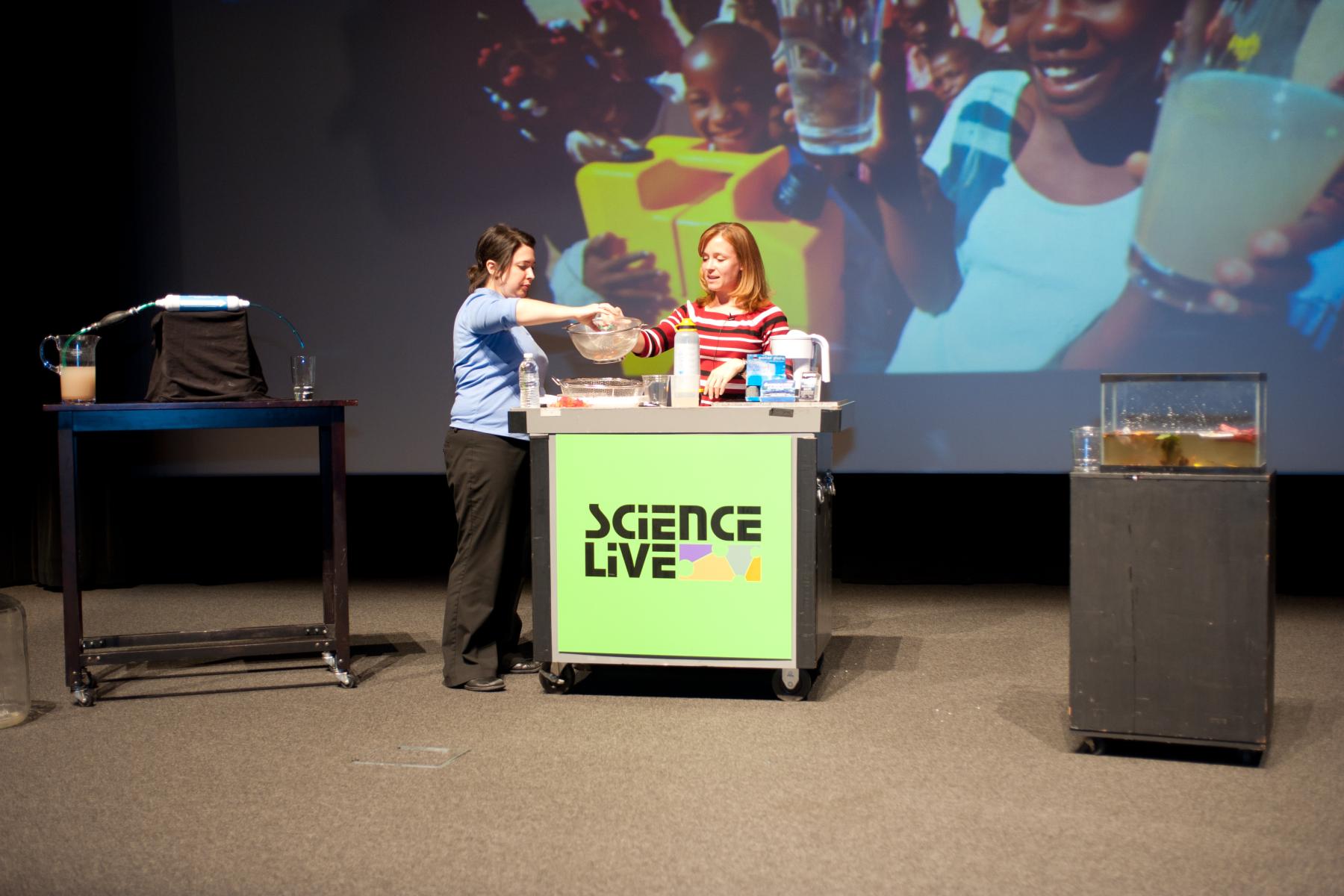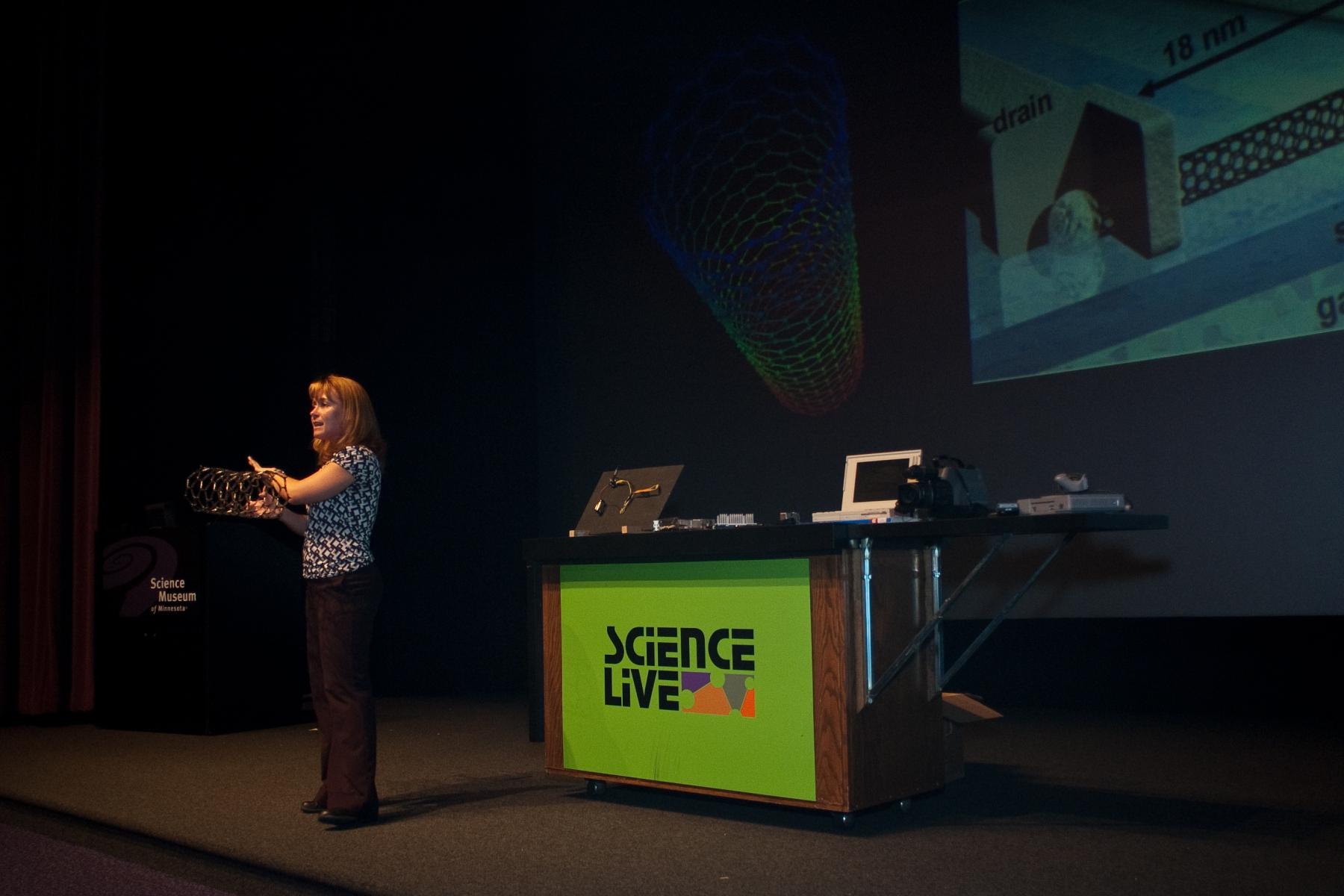DESCRIPTION
"Cleaning Our Water with Nanotechnology" is a public presentation about our drinking water and how we can make contaminated water safe to drink using a variety of technologies – including 3 new nanotechnologies for water purification. During the presentation, audiences consider the following questions: Which contaminants do we have in our water that makes it unsafe to drink? How do we typically purify our water – and what are the shortcomings/limitations of those technologies? How can new nanotechnologies purify our drinking water in new ways to help us in situations where large-scale water treatment isn’t appropriate? The presentation includes a variety of demonstrations to illustrate how these technologies work and some models to help visitors visualize what’s happening with these technologies at the nanoscale.
DESCRIPTION
"Cleaning Our Water with Nanotechnology" is a public presentation about our drinking water and how we can make contaminated water safe to drink using a variety of technologies – including 3 new nanotechnologies for water purification. During the presentation, audiences consider the following questions: Which contaminants do we have in our water that makes it unsafe to drink? How do we typically purify our water – and what are the shortcomings/limitations of those technologies? How can new nanotechnologies purify our drinking water in new ways to help us in situations where large-scale water treatment isn’t appropriate? The presentation includes a variety of demonstrations to illustrate how these technologies work and some models to help visitors visualize what’s happening with these technologies at the nanoscale.
TRAINING VIDEOS
OBJECTIVES
BIG IDEA
To purify our drinking water, we need to remove contaminants including those that are much too small to see (tiny microbes and chemicals). While large-scale water treatment plants work well, there are times/places/situations where we don’t have access to these facilities and need to purify our water at the point of use. Nanotechnology is providing some new ways to purify our water at the point of use (better filters to remove tiny microorganisms and prevent filter-fouling).
LEARNING GOALS
As a result of participating in this program, visitors will be able to:
1. Recognize that water sources can be contaminated by microbes and chemicals – contaminants that are too small to see.
2. Understand that these contaminants need to be removed to make the water safe to drink.
3. Learn that nanotechnology has made possible some new water purification technologies that clean water very simply, effectively, and with very little power.
NANO CONTENT MAP
Nanometer-sized things are very small, and often behave differently than larger things do.
Scientists and engineers have formed the interdisciplinary field of nanotechnology by investigating properties and manipulating matter at the nanoscale.
Nanoscience, nanotechnology, and nanoengineering lead to new knowledge and innovations that weren't possible before.
Nanotechnologies—and their costs, utility, risks, and benefits—are closely interconnected with society and with our values.
DOWNLOAD FILES
Credits
Museum of Science
Developed for the NISE Network with funding from the National Science Foundation under Award Numbers 0532536 and 0940143. Any opinions, findings, and conclusions or recommendations expressed in this product are those of the authors and do not necessarily reflect the views of the Foundation.
Creative Commons Attribution Non-Commercial Share Alike 3.0 United States (CC BY-NC-SA 3.0 US).
View more details

NISE Network products are developed through an iterative collaborative process that includes scientific review, peer review, and visitor evaluation in accordance with an inclusive audiences approach. Products are designed to be easily edited and adapted for different audiences under a Creative Commons Attribution Non-Commercial Share Alike license. To learn more, visit our Development Process page.





